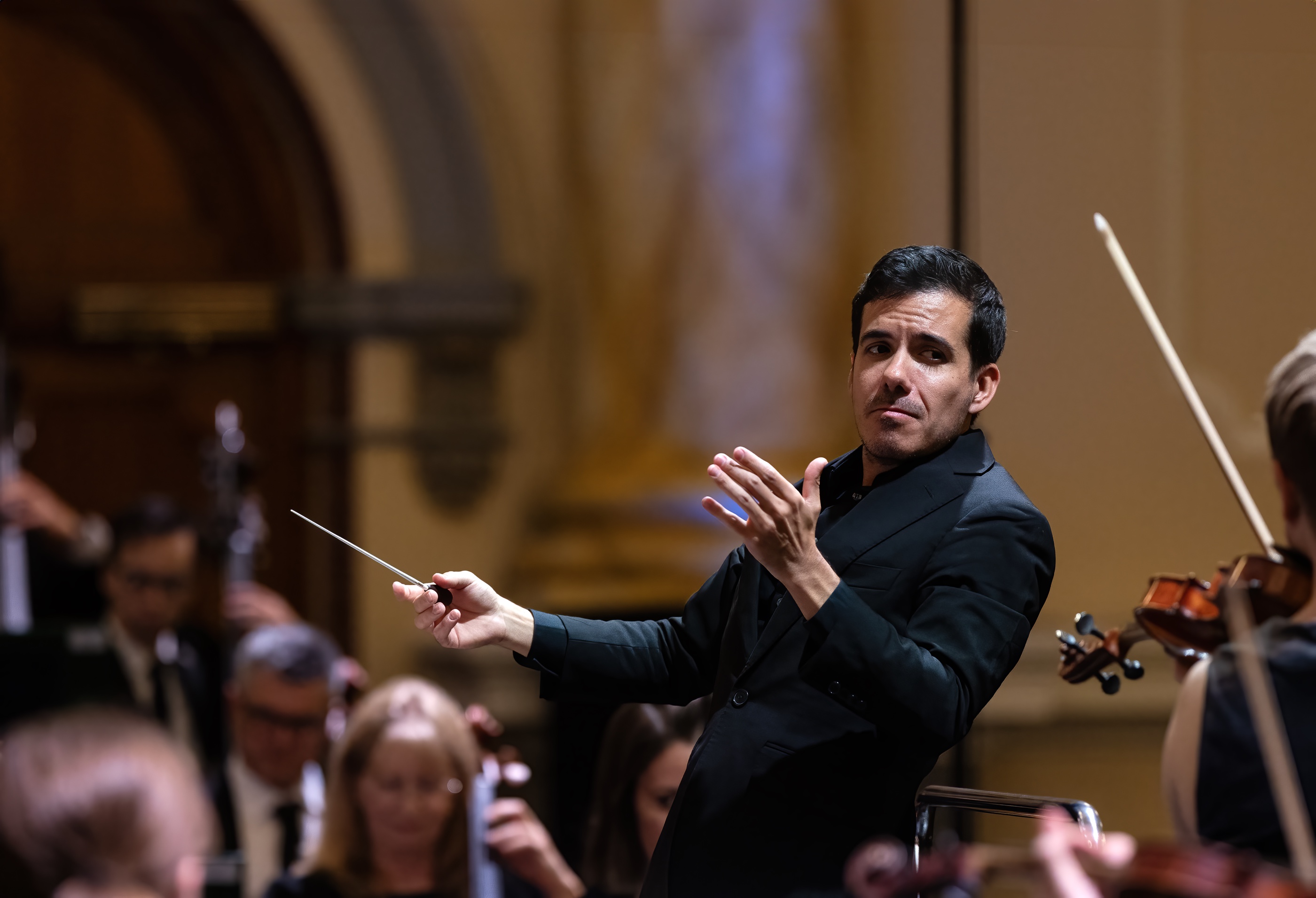Music review: Adelaide Symphony Orchestra’s Rhapsody
In her biggest concerto appearance so far, the ASO’s concert leader Kate Suthers went out on a lyrical limb in Prokofiev’s Violin Concerto No. 2. Her discoveries were sublime.

Not for a long while has the Adelaide Symphony Orchestra had such a fine concertmaster as Kate Suthers. Since 2022 this Sydney-born violinist has energised the string section and bring an air of confidence to the whole orchestra.
Incidentally, ‘leader’ or ‘first chair’ are surely better alternatives by now, instead of the archaic ‘concertmaster’.
Stepping forward as concerto soloist can be different, however. A concertmaster needs to extract themselves from the role of consensus-maker and exert their will, freely and courageously.
And it was so. By nature a virile player who seems to enjoy the spotlight, Suthers brought her whole self into the role of soloist in Prokofiev’s Violin Concerto No.2 with barely a shift of gear.
Characteristically valorous and finessed, she was a natural fit for this admired work of the repertoire.
You might like
Unlike the brutal edge of the same composer’s first violin concerto, it pursues a more lyrical line. Suthers probed the opening theme’s mysteries, reaching up as a singer would, finding greater resolve each time it returned. Where this theme swaps to the orchestra, her feather-light accompanying semiquaver passagework was something to savour.
Suthers was searching for this concerto’s interior qualities and finding sublime discoveries. Tempos were on the slightly conservative side, but this helped keep all three movements in harness and allowed space for melody to spread out. In the slow movement she found a rare beauty and intimacy that spoke of what this concerto really amounts to: a homesick Prokofiev’s love-letter to Russia.

Suthers was well up to this concerto’s athletics demands, swiping at its off-beat rhythms with almost casual ease. Her double-stopping was spotless. Violinists can go overboard with the finale’s grungy rusticity, but it was reassuring to see Suthers refraining from that. She’s a clean player and understands the classicist in Prokofiev.
Subscribe for updates
Full marks to guest conductor Nuno Coelho and the ASO, too, for their excellent partnership.
Either side of the Prokofiev, one could see what this in-demand Portuguese conductor is all about. His honed technique is something to immediately appreciate, but so also is his insightfulness. External theatrics have no place in his handbook, but instinctive musicality does.
The partnering works in this ‘Rapture’ concert, by Dvořák, Smetana and Janáček afforded the opportunity one to see what makes Coelho stand out. The former’s Othello Overture is seldom heard. With phrases that are halting and ideas that are left hanging, its bittersweetness hangs on the ear. Its debt to Tchaikovsky is unmistakable. Nevertheless, this was a performance whose conviction rose above any such debt: Coelho gave it smart outlines and true power.
Off to a fine start, one could reflect how well the ASO is playing in the Town Hall these days. Despite being hamstrung for size when it comes to larger scores, our orchestra plays sublimely in mid-sized works like this.
It could be all about the melody in Smetana’s Vltava (The Moldau), but here it was about textural detail as well. Tunes don’t get more magnificent as in this tone poem, but a mass of circulating patterns beginning in the flutes and by stages the whole orchestra are as much part of the wondrous river landscape that he paints through sound.
For pure invention, Janáček is still as astonishing a composer as he was when he wrote Taras Bulba, a romanticisation of the lives of the Cossack warriors on the Ukrainian steppes in Nikolai Gogol’s novella of the same name. Quite how Janáček conceived his extraordinary innovations more than a century ago is still baffling, and one really appreciated this close-up view of his music courtesy of Coelho.
This ‘rhapsody for orchestra’ is full of elemental, driving power and the most vivid orchestration including chimes and organ. By the end, in the third movement ‘The Prophecy and Death of Taras Bulba’, Ecstasy piled on ecstasy, it is perfectly intoxicating.
Coelho’s approach avoided anything superimposed onto the music but rather served to let it fly free. His conducting was cohesive, seamless and glorious – miles ahead of any film-score reading that fixes on localised sound events.
This was a wonderful concert of interesting music and very high calibre playing.
The Adelaide Symphony Orchestra performed Rhapsody, part of its Symphony Series, on Friday August 15 at Adelaide Town Hall

